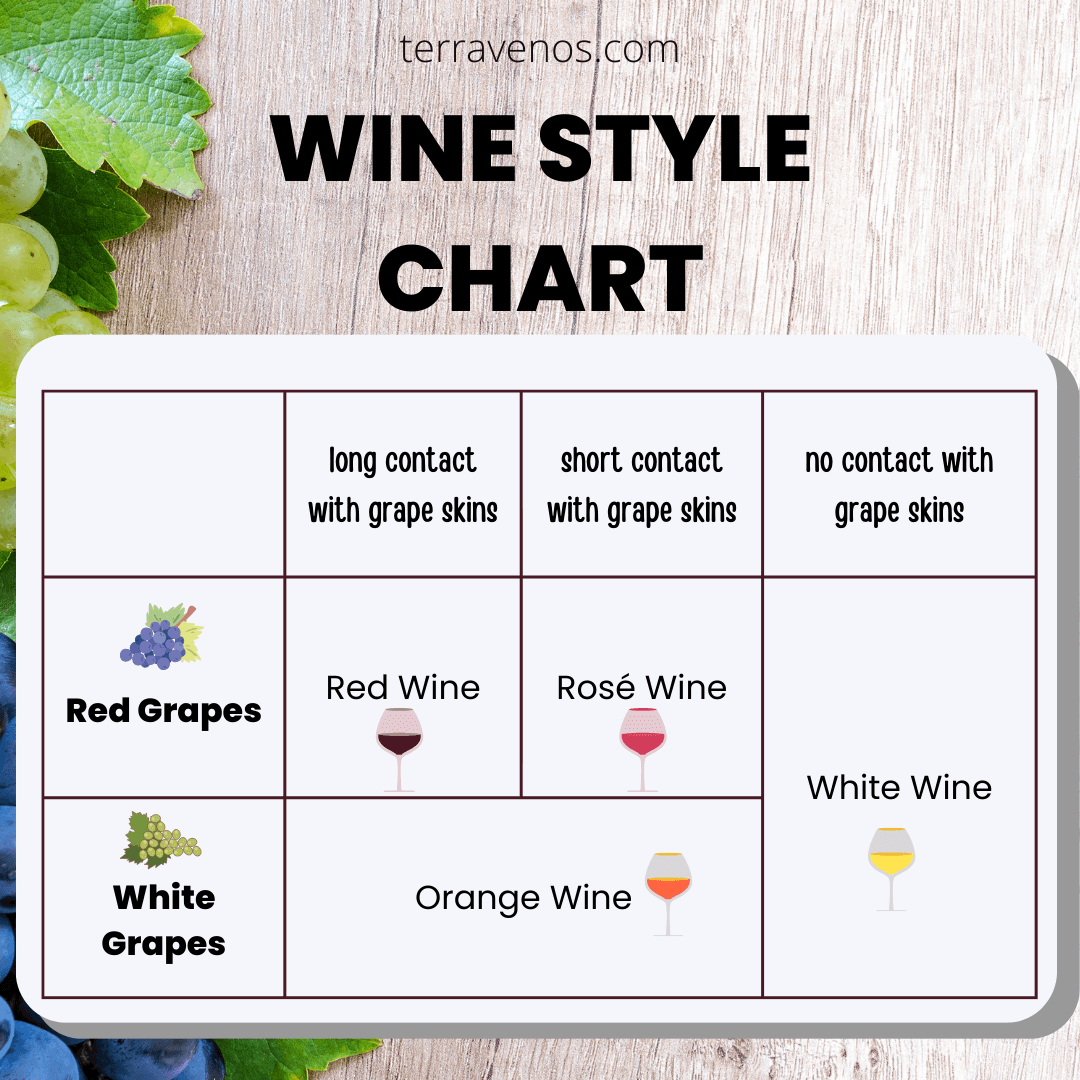
Pour yourself a glass of red wine and stare deeply into its depths long enough and you’ll inevitably wonder: What gives red wine its color?
Red wine gets its color from red grape skins. When the winemaker leaves crushed grape skins in contact with the grape juice, it dyes the juice red. Red grapes with thick skins and a low skin-to-juice ratio make deeper-colored red wines. Thin skinned red grapes, like Pinot Noir, make lighter red wines.
Here’s what you need to know about how red wine gets its color.
- Which Contributes Most to the Color of Red Wine?
- Which Pigment Is Responsible for Wine Turning Red?
- Do Red Wines Gain Color as They Age?
- Do Winemakers Add Color to Wine?
- Can White Grapes Make Red Wine?
- Why Is Pinot Noir Light in Color?
- Do Tannins Give Red Wine Its Color?
- Final Thoughts – How Does Red Wine Get Its Color? It’s all in the skins!
- Thirsty for More?
Which Contributes Most to the Color of Red Wine?
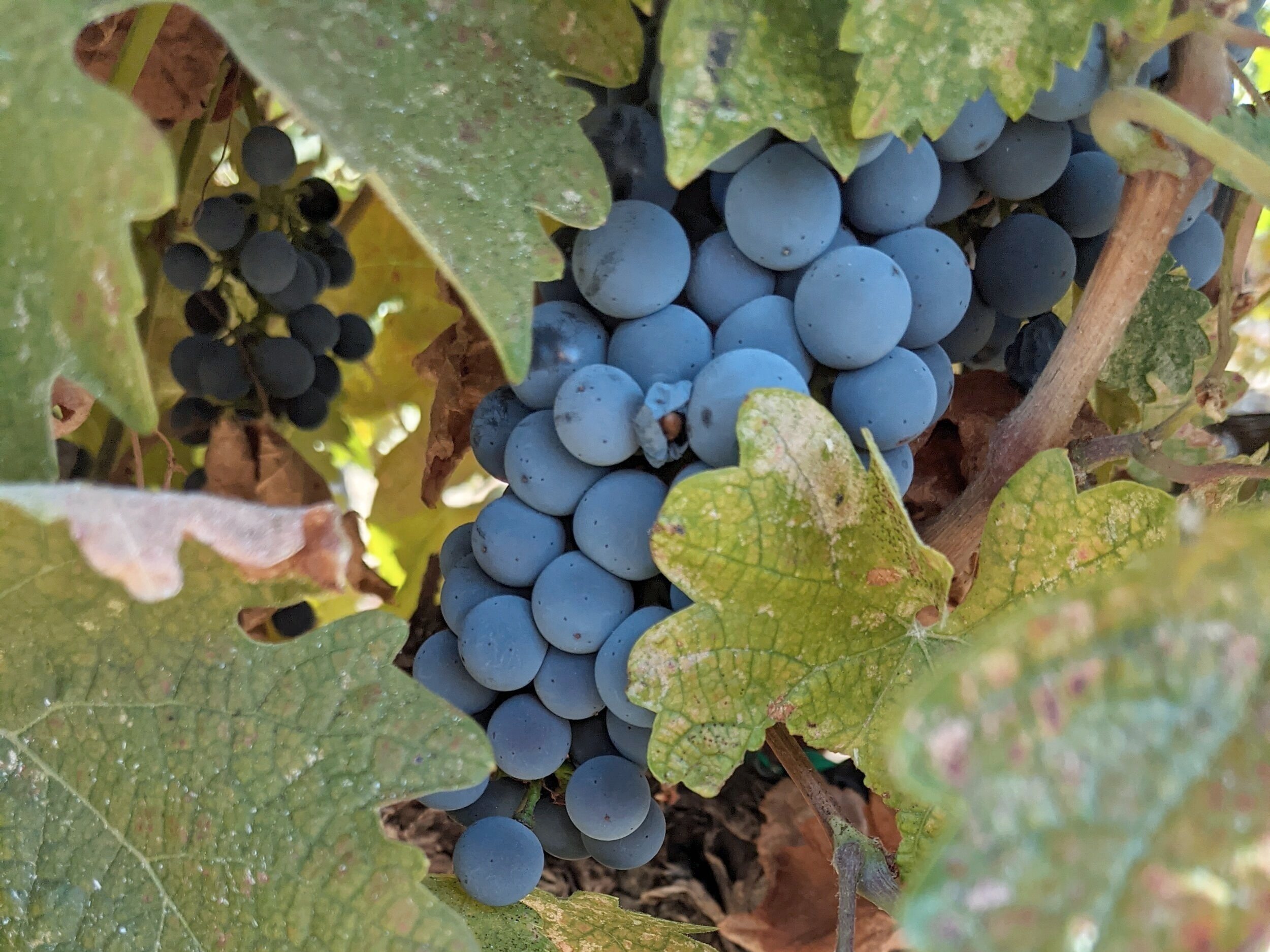
Red grape skins contribute to the color of red wine, but how much color? Here are a few variables:
- Thick Skins: Grapes with thicker skins have more color compounds contributing more color to your red wine.
- Small Berries: Smaller berries mean there’s more skin-to-juice, increasing the total skin contact with the juice, creating darker wines.
- UV Exposure/Elevation: Red wine grapes that sit at higher elevation or in regions where there’s more UV light will make wines with thicker skins and darker red wines. New Zealand and Mendoza are classic examples of red grapes making darker wines.
- pH: High acid wines (lower pH) typically have a brighter ruby color. Lower acid wines (higher pH) tend to be more purple or blue hues.
- Age: The color of red wine will fade with time. Older wines that were dark red will become brick colored and lose opacity, becoming more transparent.
- Total Skin Contact Time: The longer the grape juice is in contact with the red grape skins, the darker your red wine will be. Winemakers can deliberately extend the skin contact time to craft darker red wines.
Helpful Tip: The opposite is also true. Keeping grape juice in contact with the red grape skins for only a short period of time will result in lighter wines, including rose wine. Check out how rose wine’s made here.
Which Pigment Is Responsible for Wine Turning Red?

The pigment responsible for wine turning red is anthocyanins or anthocyans, which fall under the parent class of flavonoids. Malvidin-3-O-glucoside is the major anthocyanin giving color to red wine grapes. If you hang out with wine people, you’ll just hear them talk about anthocyanins.
Helpful Tip: Hold your wine glass at a 45° angle against a white surface like a piece of paper. This will help you see the shade, tint, and intensity of your red wine’s color.
Do Red Wines Gain Color as They Age?

No, over time, the color pigmentation in red wine slowly fades. A deeply colored red wine will lose its opacity and become lighter. Red wines also change color with age, going from bright ruby red, to more of a garnet with tinges of orange, before transitioning to brick red and finally brown.
Pro Tip: The color change in red wines is one way that professional wine judges, wine aficionados, and others in the wine industry can tell how old (or young) a red wine is. If they see orange tinges or fading on the edges of their red wine, they know that the wine is older.
Fun Wine Fact: Red wines fade and get lighter as they age. White wines actually turn darker yellow. Who knew? Now you do!
Do Winemakers Add Color to Wine?
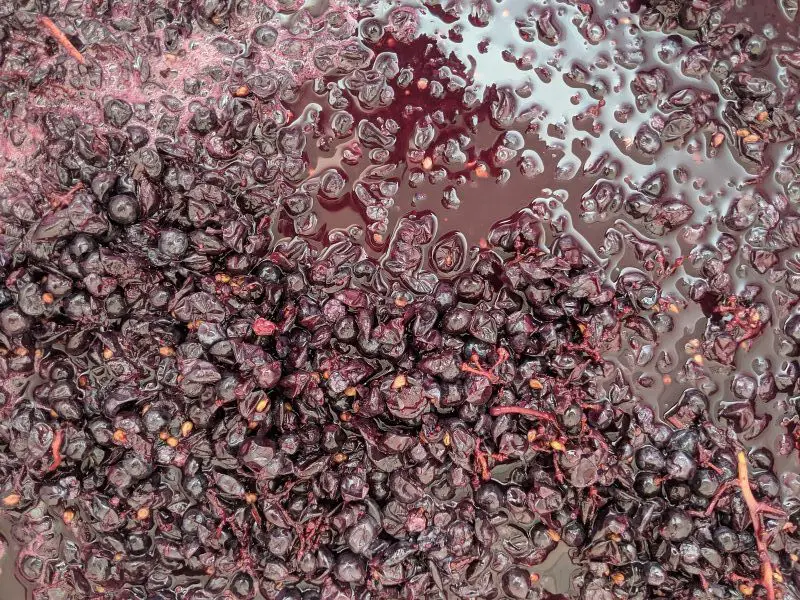
It’s illegal to add artificial color to wine, but winemakers can make color corrections using two techniques: blending and natural additives. Winemakers blend different red wines together to adjust wine color.
For example, they may choose to add a small percentage of deeply colored Syrah to a lighter Merlot to make the wine darker.
They can also use an additive made from concentrated red grape juice called Mega Purple. A tiny addition can deepen the pigmentation of a wine.
Why does anyone care what color a red wine is? There’s a perception among general wine drinkers that deeper-colored wines are higher in quality. This has no truth to it, but wine is a business and it needs to sell, so winemakers will adjust the color.
Can White Grapes Make Red Wine?
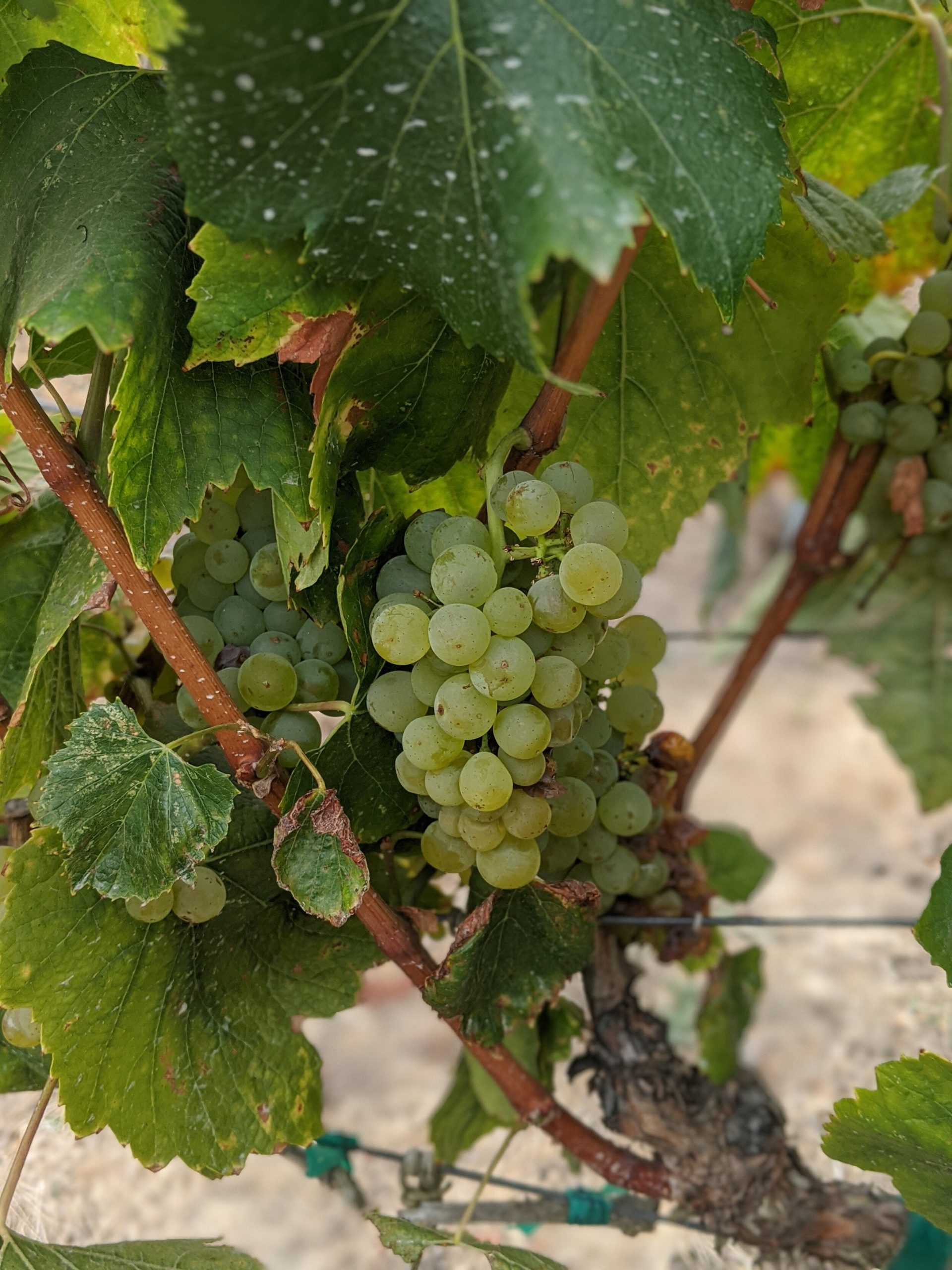
White wine grapes can never make a red wine all by themselves. They don’t have the color compounds in their skins to turn the grape juice red.
But some famous winemaking styles blend white wine grapes and red wine grapes together during the winemaking process. In the Northern Rhône, France, the white Viognier grape is often made with red Syrah grapes.
The winemakers believe that this actually helps to stabilize the red color in their Syrah wines.
Why Is Pinot Noir Light in Color?
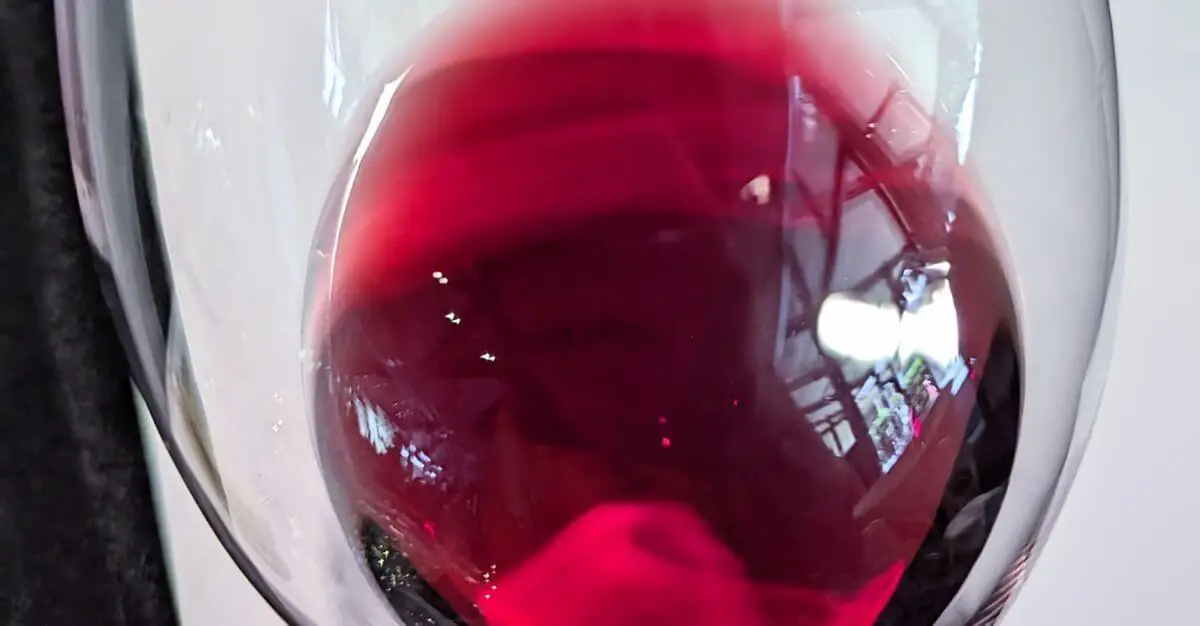
Pinot Noir is light in color because it has thin skins. Thin grape skins with fewer color molecules mean that your red Pinot Noir will be lighter in color.
Winemakers actually practice something called cold soak with Pinot Noir to try to deepen its color.
How Does Cold Soak Work in Wine?
The color compounds in grape skins are water soluble, so the winemaker will crush the grapes and let them sit on their grape skins in a big soupy mess for several days. They are trying to leech out more color from the grape skins to make your Pinot Noir darker.
Fun Wine Fact: New Zealand Pinot Noir is actually much darker than other Pinot Noirs made around the world. This is because of the intense UV rays over New Zealand and the grapes developing thick skins with more color compounds. Neat! Here’s more on Pinot Noir wine if you’re curious.
Do Tannins Give Red Wine Its Color?
No, tannin doesn’t give red wine its color. Tannin is the astringent, drying feeling in your mouth when you drink red wines. It does come from the grape skins, similar to the wine’s color, but it also comes from grape seeds, stems, and even oak if it’s used to age your red wine.
Helpful Tip: Check out this 30 second tasting tip on how to taste red wine tannins.
Final Thoughts – How Does Red Wine Get Its Color? It’s all in the skins!
Your red wine’s color is directly linked to the grapes used to make it. Whether those grapes were thin-skinned or dark-skinned, and whether it had small berries or light berries, the color will vary for each wine.
Thirsty for More?

Experiment Time! The next time you have more than one red wine open, pour small glasses of each and line them up in order from lightest to deepest. Then go ahead and give each glass a swirl and a sniff. Which wine smells most aromatic?
Here’s a post that does a deep dive on reasons why winemakers choose to blend wine (color is certainly a consideration).



